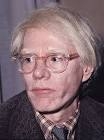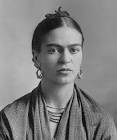Andy Warhol – The Pop Art Icon’S Life, Family, And Legacy
Andy Warhol, born Andrew Warhola on August 6, 1928, in Pittsburgh, Pennsylvania, was an American artist, director, and producer who was a leading figure in the visual art movement known as pop art. His explorations of art, culture, and celebrity redefined the landscape of the 20th-century art world. Warhol’s work spanned various forms of media, including painting, printmaking, photography, and film, and his avant-garde approach challenged traditional notions of art and its production.

Personal Information
| Full Name | Andrew Warhola |
|---|---|
| Nick Name / Stage Name | Andy Warhol |
| Born | August 6, 1928, Pittsburgh, Pennsylvania, United States |
| Died | February 22, 1987, New York City, New York, United States |
| Age | 58 |
| Gender | Male |
| Zodiac Sign | Leo |
| Hometown | Pittsburgh, Pennsylvania |
| Nationality | American |
| Years Active | 1949 – 1987 |
| Marital Status | Unmarried |
| Political Affiliation | Democratic Party, Socially Active |
| Alma Mater | University of Pittsburgh, Carnegie Mellon University |
| Profession | Artist, Director, Producer |
| Net Worth (approx.) | $220 million |
| Debut | 1952, First solo exhibition at Hugo Gallery, New York City |
| School | Holmes Elementary School |
| College | Carnegie Mellon University |
| Education Qualification / Degree | Bachelor of Fine Arts |
| Hobbies/Habits/Interests | Collecting, Socializing, Photography |
| Favorite Clothing Brands | Levi’s, Brooks Brothers |
| Favorite Gadgets | Polaroid Camera, Tape Recorder |
| Food Habit | Vegetarian |
| Awards | 1964, Award for Merit from American Institute of Graphic Arts |
| Notable Works | Marilyn Diptych, Campbell’s Soup Cans, Eight Elvises |
| Website | The Andy Warhol Museum |
Early Career
Andy Warhol’s journey into the art world began in the 1940s after he completed his degree in Fine Arts. His first job after graduation was as a commercial artist in New York City. This job allowed him to develop his distinct style and approach to art production. During this period, Warhol also worked on significant projects for various clients, including fashion magazines, advertising agencies, and record companies.
Despite being successful in the commercial art scene, Warhol yearned to explore fine art, leading to his first significant exhibition at the Hugo Gallery in 1952. This exhibition marked the beginning of his journey as a fine artist and received positive feedback from art critics, laying the foundation for his future artistic pursuits.
Education
Andy Warhol’s educational journey laid the groundwork for his artistic endeavors. He attended the University of Pittsburgh before transferring to Carnegie Mellon University, where he graduated with a Bachelor of Fine Arts degree in 1949. Warhol’s time in academia allowed him to experiment with different artistic styles and mediums, contributing to his development as an artist.
Career
Warhol’s career as an artist is characterized by prolific creativity, and he learned during his career that mass production could be art, too. He embraced consumer culture and the proliferation of images in the media, incorporating techniques such as silk screening to produce multiple, identical images. This approach challenged the traditional notion of unique artwork and questioned the concept of authorship.
The 1960s were a transformative decade for Warhol. He founded “The Factory,” his iconic studio in New York City, which became a hub for artists, intellectuals, actors, and musicians. It was during this time that he began exploring filmography, directing and producing several films, including “Chelsea Girls” and “Empire.” Warhol’s films were often experimental and challenged cinematic conventions.
Contributions and Impact
Andy Warhol’s contributions to the art world are immeasurable. His exploration of pop culture and celebrity resulted in iconic works that continue to influence artists today. Warhol himself became a cultural icon, and his ability to blur the line between art and commerce revolutionized the art industry.
-
Pop Art Movement: Warhol is credited with being a central figure in the pop art movement. His interpretations of everyday objects and celebrities in bold colors and repetitive patterns challenged traditional artistic norms and paved the way for generations of pop artists.
-
Celebrity Culture: Warhol’s fascination with celebrity and fame was reflected in many of his works. He famously said, “In the future, everyone will be world-famous for 15 minutes.” This prediction has become a reality in the age of social media, highlighting Warhol’s keen understanding of cultural evolution.
Awards and Honors
| Year | Award/Honor | Description |
|---|---|---|
| 1964 | Award for Merit from American Institute of Graphic Arts | Recognition of his significant contribution to graphic arts. |
| 1964 | Guggenheim Fellowship | Prestigious grant for artistic achievement. |
Personal Life
Despite his larger-than-life public persona, Andy Warhol maintained a private personal life. He was known for his circle of friends and collaborators, and his studio, The Factory, became the epicenter of artistic and social activity in 1960s New York. Warhol’s sexual orientation was a subject of speculation, and his reluctance to discuss his personal life added to his enigmatic image.
Personal Traits
| Trait | Description |
|---|---|
| Personality | Enigmatic, Eccentric, Obsessive |
| Interests | Pop Culture, Celebrity, Consumerism |
| Hobbies | Collecting Art, Photography, Socializing |
| Passions | Artistic Expression, Cultural Commentary |
| Values | Individuality, Expression, Creative Freedom |
| Quirks | Wore Wigs, Pale Foundation, Unconventional Work Methods |
| Fun Facts | Adopted the name “Warhol” early in his career, Was a fervent recordist of his social interactions. |
Height, Weight, Body Measurements
| Height | 5 feet 8 inches |
|---|---|
| Weight | 135 lbs |
| Body Measurements | Not Known |
| Eye Color | Brown |
| Hair Color | Dark Brown |
| Chest Size | Not Known |
| Waist Size | Not Known |
| Biceps Size | Not Known |
| Height in Centimeters | 173 cm |
| Height in Meters | 1.73 m |
| Height in Feet Inches | 5’8″ |
Scientific or Professional Career
| Fields of Expertise | Art, Filmography, Photography |
|---|---|
| Institutions | The Factory |
| Contributions | Significant influence on pop art movement, Revolutionized art production techniques. |
Legacy
Andy Warhol’s legacy is multifaceted and far-reaching. Not only did he leave an indelible mark on the art world, but he also influenced popular culture, social commentary, and the very nature of artistic expression. The Andy Warhol Museum, located in his hometown of Pittsburgh, stands as a testament to his life and work, housing the largest collection of Warhol’s art and archives in the world.
As an iconic figure, Warhol continues to inspire artists, filmmakers, and cultural commentators. His explorations of celebrity culture and the commodification of art remain relevant topics of discussion in contemporary society. Warhol’s own journey from a commercial artist to a revolutionary figure in the art world serves as motivation for countless creatives navigating the fine line between art and commerce.
Conclusion
In conclusion, Andy Warhol’s influence on the art world and popular culture is immeasurable. His innovative approaches to art production and his willingness to challenge established norms have left a lasting legacy. As an artist, director, and producer, Warhol defied categorization, and his ability to reinvent himself resonates with the ever-changing creative landscape.
Through his work at The Factory, Warhol not only mentored young artists but also shaped the cultural scene of 1960s New York. His fascination with celebrity and his own enigmatic personality have contributed to the mythos surrounding his name. Andy Warhol’s artistic vision and entrepreneurial spirit have left an indelible mark on the way we perceive and consume art today.
In the words of Warhol himself, “Art is what you can get away with.” His entire career was a testament to this philosophy, pushing the boundaries of art and challenging societal norms. Andy Warhol’s journey from a working-class upbringing to becoming the quintessential pop artist is nothing short of inspirational. His ability to find art in the mundane and the mass-produced has changed the artistic landscape forever.
In this 21st century, Andy Warhol’s vision continues to endure, and he remains a source of fascination and inspiration for countless individuals across the globe. As an artist who understood the power of imagery and its manipulation, Warhol’s relevance in the digital age is greater than ever. He anticipated many cultural shifts, and his words continue to resonate in today’s social and technological context.
In conclusion, Andy Warhol’s life and work will continue to influence artistic expression and cultural discourse for generations to come. He has left an indelible mark on the art world and beyond, and his status as an iconic figure is secure in the annals of history.





